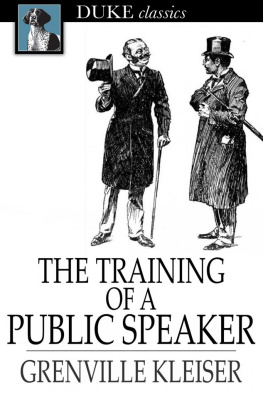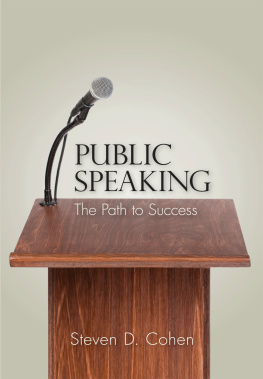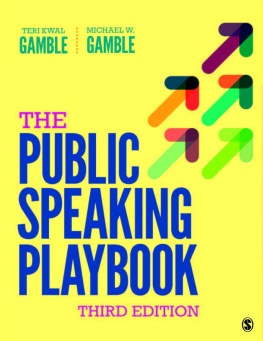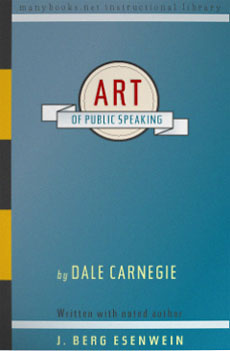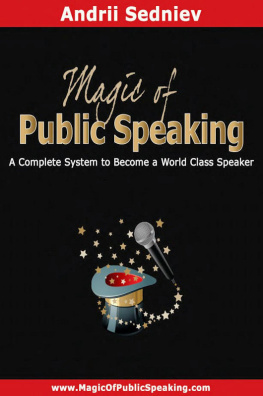About Carnegie:Dale Breckenridge Carnegie (originally Carnagey until 1922 andpossibly somewhat later) (November 24, 1888 November 1, 1955) wasan American writer and lecturer and the developer of famous coursesin self-improvement, salesmanship, corporate training, publicspeaking and interpersonal skills. Born in poverty on a farm inMissouri, he was the author of How to Win Friends and InfluencePeople, first published in 1936, a massive bestseller that remainspopular today. He also wrote a biography of Abraham Lincoln, titledLincoln the Unknown, as well as several other books. Carnegie wasan early proponent of what is now called responsibility assumption,although this only appears minutely in his written work. One of thecore ideas in his books is that it is possible to change otherpeople's behavior by changing one's reaction to them.
Copyright: This work isavailable for countries where copyright is Life+50 or in the USA (published before 1923).
Note: This book is brought toyou by Feedbooks
http://www.feedbooks.com
Strictly for personal use, do not use this file for commercialpurposes.
THINGS TO THINK OF FIRST: A FOREWORD
The efficiency of a book is like that of a man, in one importantrespect: its attitude toward its subject is the first source of itspower. A book may be full of good ideas well expressed, but if itswriter views his subject from the wrong angle even his excellentadvice may prove to be ineffective.
This book stands or falls by its authors' attitude toward itssubject. If the best way to teach oneself or others to speakeffectively in public is to fill the mind with rules, and to set upfixed standards for the interpretation of thought, the utterance oflanguage, the making of gestures, and all the rest, then this bookwill be limited in value to such stray ideas throughout its pagesas may prove helpful to the readeras an effort to enforce a groupof principles it must be reckoned a failure, because it is thenuntrue.
It is of some importance, therefore, to those who take up thisvolume with open mind that they should see clearly at the out-startwhat is the thought that at once underlies and is builded throughthis structure. In plain words it is this:
Training in public speaking is not a matter ofexternalsprimarily; it is not a matter of imitationfundamentally;it is not a matter of conformity to standardsat all. Publicspeaking is public utterance, public issuance, of the man himself;therefore the first thing both in time and in importance is thatthe man should be and think and feel things that are worthy ofbeing given forth. Unless there be something of value within,no tricks of training can ever make of the talker anything morethan a machinealbeit a highly perfected machinefor the deliveryof other men's goods. So self-development is fundamental in ourplan.
The second principle lies close to the first: The man mustenthrone his will to rule over his thought, his feelings, and allhis physical powers, so that the outer self may give perfect,unhampered expression to the inner. It is futile, we assert, to laydown systems of rules for voice culture, intonation, gesture, andwhat not, unless these two principles of having something to sayand making the will sovereign have at least begun to makethemselves felt in the life.
The third principle will, we surmise, arouse no dispute: No onecan learn how to speak who does not first speakas best he can. That may seem like a vicious circle in statement,but it will bear examination.
Many teachers have begun with the how. Vaineffort! It is an ancient truism that we learn to do by doing. Thefirst thing for the beginner in public speaking is to speaknot tostudy voice and gesture and the rest. Once he has spoken he canimprove himself by self-observation or according to the criticismsof those who hear.
But how shall he be able to criticise himself? Simply by findingout three things: What are the qualities which by common consent goto make up an effective speaker; by what means at least some ofthese qualities may be acquired; and what wrong habits of speech inhimself work against his acquiring and using the qualities which hefinds to be good.
Experience, then, is not only the best teacher, but the firstand the last. But experience must be a dual thingthe experience ofothers must be used to supplement, correct and justify our ownexperience; in this way we shall become our own best critics onlyafter we have trained ourselves in self-knowledge, the knowledge ofwhat other minds think, and in the ability to judge ourselves bythe standards we have come to believe are right. "If I ought," saidKant, "I can."
An examination of the contents of this volume will show howconsistently these articles of faith have been declared, expounded,and illustrated. The student is urged to begin to speak at once ofwhat he knows. Then he is given simple suggestions forself-control, with gradually increasing emphasis upon the power ofthe inner man over the outer. Next, the way to the rich storehousesof material is pointed out. And finally, all the while he is urgedto speak, speak, SPEAK as he isapplying to his own methods, in his own personalway,the principles he has gathered from his own experience andobservation and the recorded experiences of others.
So now at the very first let it be as clear as light thatmethods are secondary matters; that the full mind, the warm heart,the dominant will are primaryand not only primary but paramount;for unless it be a full being that uses the methods it will be likedressing a wooden image in the clothes of a man.
J. BERG ESENWEIN.
NARBERTH, PA.,
JANUARY 1, 1915.
Sense never fails to give them that have it, Words enough tomake them understood. It too often happens in some conversations,as in Apothecary Shops, that those Pots that are Empty, or haveThings of small Value in them, are as gaudily Dress'd as those thatare full of precious Drugs.
They that soar too high, often fall hard, making a low and levelDwelling preferable. The tallest Trees are most in the Power of theWinds, and Ambitious Men of the Blasts of Fortune. Buildings haveneed of a good Foundation, that lie so much exposed to theWeather.
William Penn.
Chapter ACQUIRING CONFIDENCE BEFORE AN AUDIENCE
There is a strange sensation often experienced in the presenceof an audience. It may proceed from the gaze of the many eyes thatturn upon the speaker, especially if he permits himself to steadilyreturn that gaze. Most speakers have been conscious of this in anameless thrill, a real something, pervading the atmosphere,tangible, evanescent, indescribable. All writers have bornetestimony to the power of a speaker's eye in impressing anaudience. This influence which we are now considering is thereverse of that picturethe power their eyes mayexert upon him, especially before he begins to speak: after theinward fires of oratory are fanned into flame the eyes of theaudience lose all terror.William Pittenger, ExtemporeSpeech.
Students of public speaking continually ask, "How can I overcomeself-consciousness and the fear that paralyzes me before anaudience?"
Did you ever notice in looking from a train window that somehorses feed near the track and never even pause to look up at thethundering cars, while just ahead at the next railroad crossing afarmer's wife will be nervously trying to quiet her scared horse asthe train goes by?



